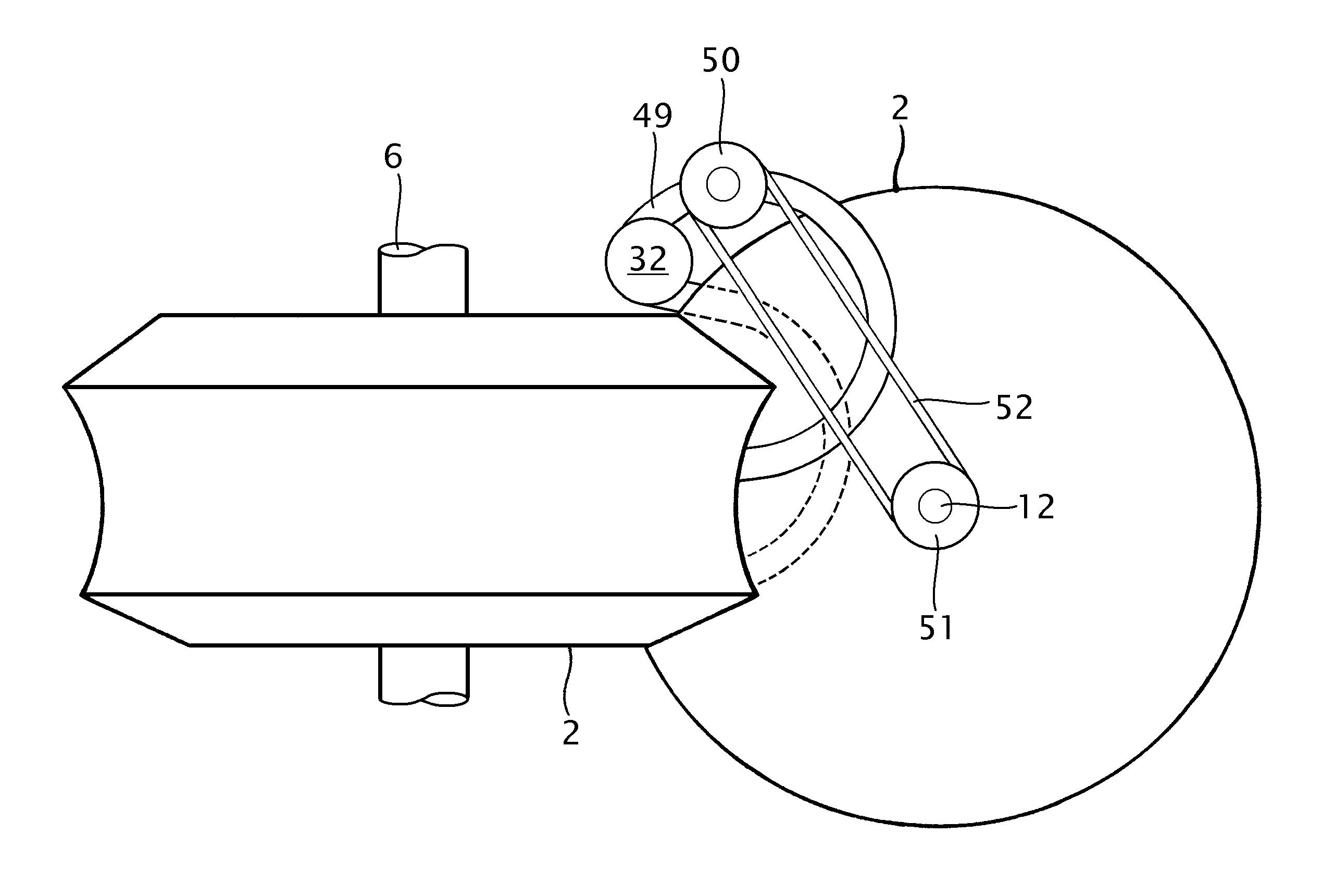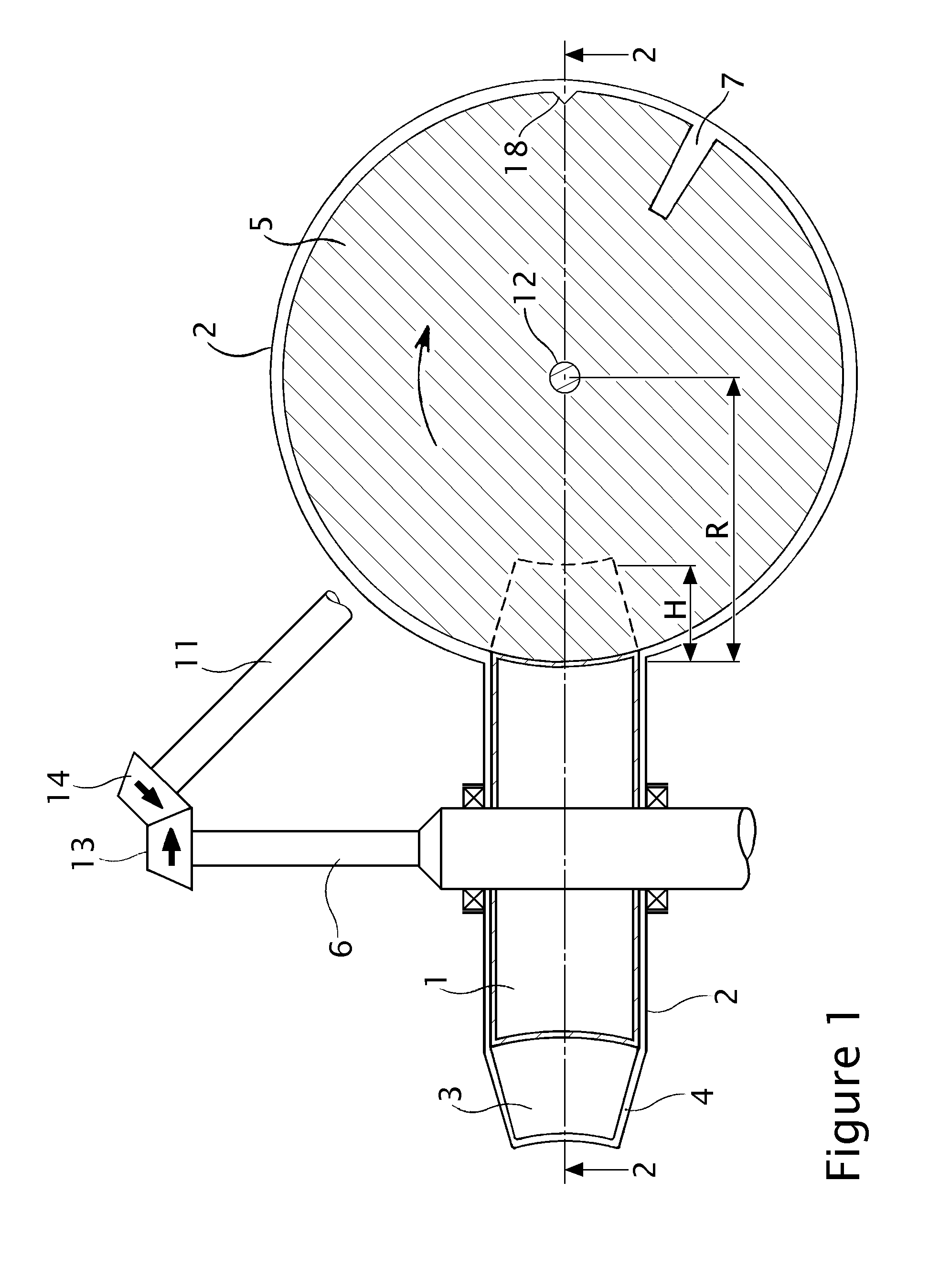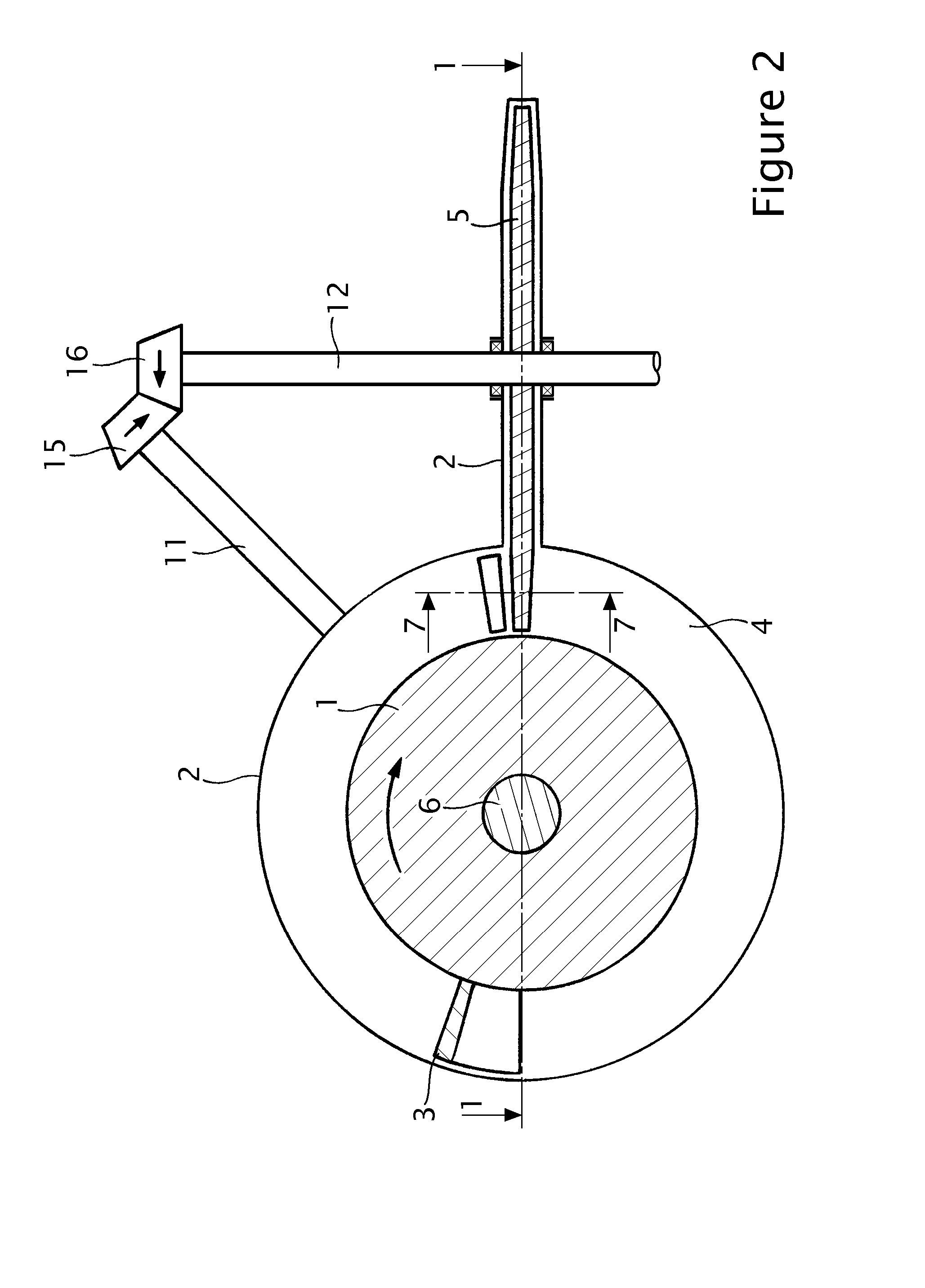Blade-thru-slot combustion engine, compressor, pump and motor
a piston-throwing, combustion engine technology, applied in the direction of rotary or oscillating piston engines, rotary piston engines, engine lubrication, etc., can solve the problems of severe inherent limitations of design, increase friction and wear, and reduce performance, so as to reduce the cooling requirements, reduce the internal friction, and reduce the effect of high internal friction
- Summary
- Abstract
- Description
- Claims
- Application Information
AI Technical Summary
Benefits of technology
Problems solved by technology
Method used
Image
Examples
Embodiment Construction
[0053] The blade-thru-slot (BTS) rotary machine can be implemented as a compressor, pump, motor or combustion engine. The following description will sequentially describe each of these implementations.
[0054]FIGS. 1 and 2 present schematic views of a BTS compressor or pump. The basic elements are a rotor 1, contained in a static housing 2, with one or more radial blades 3 arranged equiangularly; a chamber 4 swept by the blade(s); and one or more planar slot valves 5, one per blade, also placed radially and equiangularly in the chamber. Rotor 1 (FIG. 3) is mounted and secured on main shaft 6, which receives the driving torque at one of its ends. Blades and slot valves move synchronously to each other in a way that blades 3 timely reach and traverse slots 7. Blades and slots have special matching shapes that allow such traversal with negligible loss of working fluid through the slots; this is further explained below.
[0055] Referring to FIG. 4, the best match between blade 3 (not show...
PUM
 Login to View More
Login to View More Abstract
Description
Claims
Application Information
 Login to View More
Login to View More - R&D
- Intellectual Property
- Life Sciences
- Materials
- Tech Scout
- Unparalleled Data Quality
- Higher Quality Content
- 60% Fewer Hallucinations
Browse by: Latest US Patents, China's latest patents, Technical Efficacy Thesaurus, Application Domain, Technology Topic, Popular Technical Reports.
© 2025 PatSnap. All rights reserved.Legal|Privacy policy|Modern Slavery Act Transparency Statement|Sitemap|About US| Contact US: help@patsnap.com



